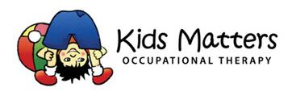“How does your Engine Run” (by Williams and Shellenberger) is a cognitive-based intervention used to enable children to become aware of their arousal level and change it using sensorimotor strategies. Strategies are based on arousal theory, learning theories and sensory-motor self-regulation strategies.
Arousal Theory
Arousal refers to the state of the nervous system used to describe how alert a person feels. A person’s nervous system must be in an optimal state of arousal for him or her to be able to pay attention, concentrate and perform required life tasks effectively. For example, a child must be appropriately alert in order to learn effectively at school.
Arousal States or Engine Levels
Levels of arousal can be compared to the motor of a car – Low Speed, High Speed or Just Right.
• Low – When it is so difficult to get moving. One feels low, lethargic, poor motivation and hard to get going.
• High – When it is hard to slow down or stop. This is marked by poor attention and hyperactive behaviour and difficulty sitting still.
• Just Right – When it is easy to concentrate, learn and efficiently complete daily tasks.
Self-Regulation
Self-Regulation is the ability to attain, maintain and change arousal appropriately for a task or situation, as required. There are subconscious and conscious methods for self-regulation.
Approach taken by Kids Matters OT
Kids Matters OTs educate children and their family on arousal theory and self-regulation and help the child explore what strategies help keep their engine “just right”.
